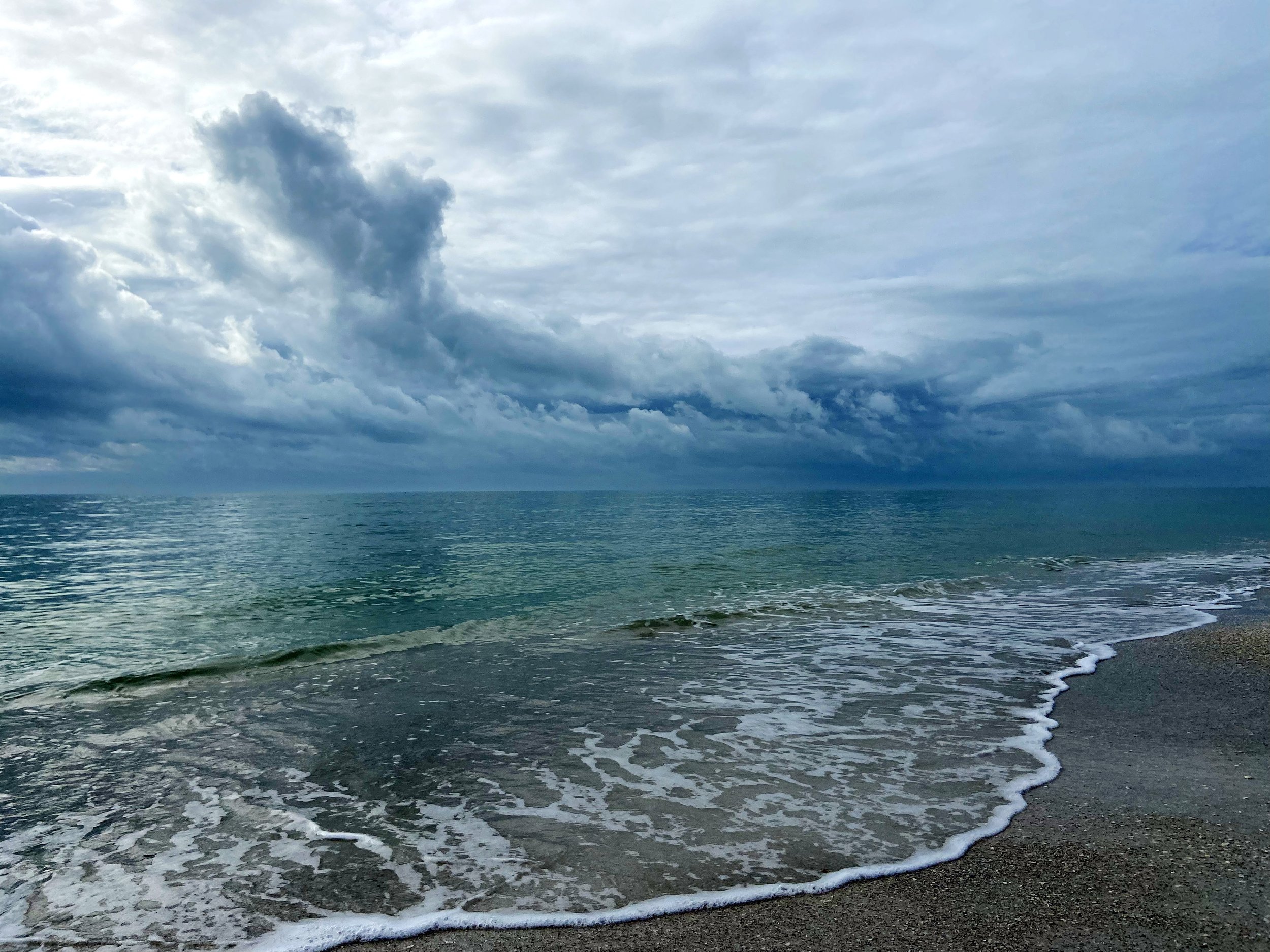A fertile space for the Divine in our art
Photo by Chuck Hoffman © Genesis+Art
Gulf of Mexico
Ana Maria Island, Florida
When we settle into the spiritual realm of art making, we have found that art can amplify the sacred and challenge the status quo. The arts help us to hear above the cacophony amid our noisy and chaotic world. The arts can call upon and engage a sacred frequency that is perforated with pregnant pauses. We have learned there are experiences too full for human tongues, too alive for articulation. When you dance, rhyme, and sing, you can almost reach it, but joy unspeakable is experience and sojourn, it is the ineffable within our reach. The arts help us feel those high notes.
We tend to create our art without much concern for audience, not because we don’t want our art to be accepted, but because in order for our art to honor the voice that creates the art, a voice that, even the most secular artists acknowledge, seems to come from “somewhere else” – in order, that is, for the art to be art – you have to acquire a monkish devotion to its source, and to the silence wishing us to enable that source to speak.
Some sacred spaces bear none of the expected characteristics. The fact that some prefer stained glass windows, pomp, and circumstance … has nothing to do with the sacred. It may seem as if the mysteries of divine-human reunion erupt in our lives when, in fact we are walking the boundary of earth and sea, the otherness of spiritual abiding is integral to human interiority. On occasion, we turn our attention to this abiding presence and are startled that it was always there.
It is people of spirit, the artists, poets, seers, fools, and the dreamers who plant trees for later. Many of our trees will not thrive, many of our seeds will be sterile, many of our dreams will turn out to be unfulfilled, delusions, and false hopes. Where is there harm in that?
See more conversation in EARTH and SPIRIT.
SHARE THIS BLOG POST:

